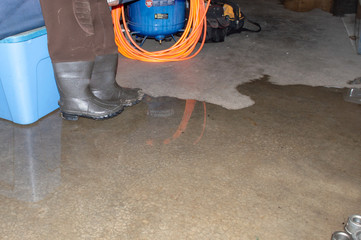Hiring Disaster Cleanup Services
Natural disaster cleanup can be hazardous, whether it is because of widespread flooding, damage to buildings and infrastructure, or mold. Long-term mold exposure can lead to serious health issues such as asthma and allergies. It can also cause lung damage. This is why it is important to use personal protective equipment and follow appropriate safety practices during natural disaster cleanup.

Disaster Cleanup companies has the right equipment and supplies to restore a home or business to its pre-disaster condition. They use various cleaning methods to ensure no harmful chemicals are left behind. Their workers will work fast to restore your property to its original state.
When you need to hire disaster cleanup services, you should keep a few things in mind:
- You need to have the proper supplies to complete the task.
- It would be best to take precautions when working with these supplies.
- You should know the cost of hiring disaster cleanup services.
Exposure to water is another danger since floodwaters can contain pollutants and sewage. These substances can be corrosive and can cause illness. In addition, because floodwaters are damp, mold can grow, posing a respiratory hazard. Proper personal protective equipment and gloves protect workers from exposure to hazardous materials.
The planning process begins with hazard identification. A team of experts from government, private organizations, and the public works with stakeholders and municipal governments to identify potential hazards. They then perform a risk assessment. The assessment involves evaluating the probability and impact of each hazard. They also gather scientific evidence and data from past events. This information ranks hazards and determines which ones pose the greatest threat.
During a disaster, it is important to be prepared with supplies to help you stay healthy. It is important to have bottled water, first aid supplies, and nonperishable food in your disaster kit. It would be best if you also had flashlights, batteries, and blankets in case of emergencies. A disaster kit should contain enough items to keep everyone comfortable for at least three days.
Depending on the size of the disaster, you may have to purchase additional supplies. You may need janitorial supplies to clean up spilled inventory and water during the cleanup process. You may also need to purchase sorbents for the cleanup of hazardous waste. Also, you may need to have portable beverages or coolers on hand. If you have a pet, purchase a nonperishable food product that will last for a single meal. You can also purchase a tent to keep your family warm and dry during the cleanup process.
Besides the general supplies, you may need specialized equipment to complete the cleanup. You may need protective earplugs or headphones when working with noisy equipment. If you are working with heavy objects, do not lift them by yourself. You should have at least two people to help you. Moreover, ensure you do not lift anything heavier than 50 pounds.
When disaster cleanup is in progress, workers should be trained and equipped to deal with hazardous materials. The hazards can range from standing contaminated water to electricity lines that have been knocked out of service. Even small amounts of water may be dangerous, so workers should stay away from them. Workers should also avoid heavy lifting and operating machinery unless they have specialized training.
Workers should also be informed of hazards and precautions before starting the cleanup process. This can be done by conducting a safety briefing for the volunteers working on the cleanup site. This briefing can help minimize the risk of injury or death. It can also inform them about emergency procedures and first aid.
Electrical shock is one of the workers’ most common causes of fatalities after natural disasters. During a hurricane, for example, power lines may have become downed and electrified. Until the area has been completely flooded and de-energized, workers must exercise extreme caution around power lines. They should also avoid touching fallen power lines or driving through standing water. They should also stay in their cars if a power line falls.
Workers should also use appropriate protective equipment, including PPE. A fully encapsulated chemical protective suit is sometimes required because airborne toxins can easily penetrate the skin. In addition to this, they should wear a chemical-resistant uniform and outer gloves. The protective gear should also meet the requirements set by the government. When selecting PPE, look for the label “Approved by NIOSH” or similar certification. Also, the respirator should be fitted to the level of chemical exposure expected. It should also have a protection factor of 10 or higher.
A good disaster cleanup company will have the right equipment to assess the situation quickly. They should also be readily accessible via the phone, email, or text message and should be able to give you advice on the cleaning process. If you are unsure about the cost of hiring a disaster cleanup company, make sure you check the Better Business Bureau or contact your insurance company for recommendations. Many options are available to you, so don’t feel overwhelmed by the cost.
